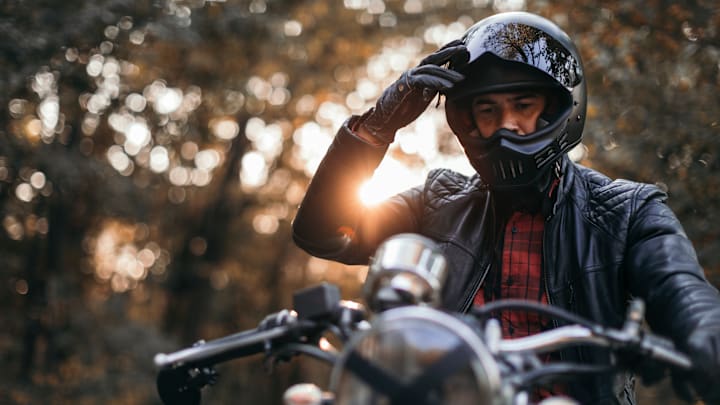If you’ve ever driven near a motorcyclist, you might have noticed them tapping their helmet or sticking their hands and feet out to the side. These might just seem like random gestures, but in fact, they’re part of the body language motorcyclists use to communicate with each other on the road.
Many of these gestures are covered in motorcycle training courses, meaning they’re not necessarily decipherable to people driving cars. But being able to read these signals can help you be more aware while driving and may even save you from a ticket.
A Handy Gesture

Tapping on the helmet is one of the most-used and most helpful gestures in this language. It’s technically supposed to be the equivalent of drivers flashing their high beam headlights, and is used in much the same way. It can be a call for caution, often due to hazards in the road like potholes or debris. Or, much to the consternation of some police, it can indicate that there is a speed trap ahead.
You May Also Like:
- Why Motorcycles Are the Most Dangerous Mode of Transportation
- These Are the Most Dangerous Highway Ramps Across the U.S.
- Why Don’t More School Buses Have Seatbelts?
Add Mental Floss as a preferred news source!
So next time you see that tap, it’s worth slowing down. That is, unless you’ve just done something kind for a cyclist, like letting them merge—in which case, the tap might just be a simple thank you.
Other Signals to Know
There are many other signals that help motorcyclists riding in groups communicate with each other, and some are more safety-oriented than others.

For example, holding the left arm out with the palm facing down and lowering it with a swinging motion indicates to other riders that they should slow down, and raising and swinging the arm up and with the palm pointed toward the sky means that they should speed up. If you accidentally leave your turn signal on, you might see a motorcyclist letting you know by opening and closing their fist. And when there are hazards in the road, pointing with the left hand or right leg allows them to identify where other motorists should be looking out.
On the less serious side, if a rider is hungry or thirsty, they can let others know they want to stop by putting their fist near their face with their thumb out, mimicking a straw.
Hand Signal | Meaning |
|---|---|
Tapping helmet | Hazard/police ahead |
Lowering left arm | Slow down |
Raising left arm | Speed up |
Opening/closing fist | Turn signal on |
Pointing with left hand/right leg | Hazard in road |
Pointing thumb at face | Stop for food/drink |
These signals make up their own language that creates a safer and more pleasurable experience for motorcyclists riding in groups. But you don’t have to own a motorcycle to learn the nonverbal lingo—and when you’re on the road, being in the loop can make all the difference.
